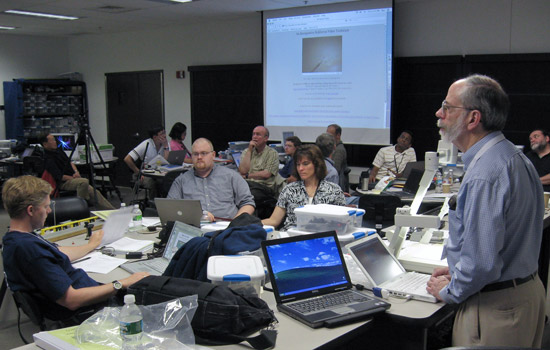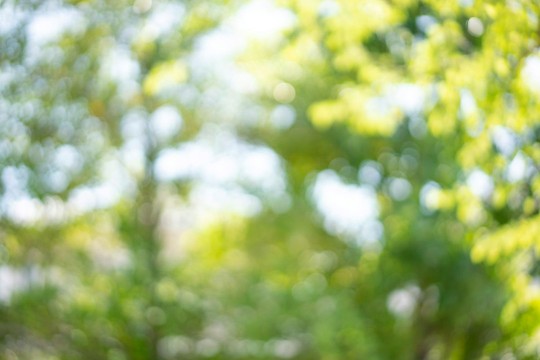LivePhoto Physics Project gives professors new tools for teaching physics
Robert Teese, professor of physics, leads a session on how to use schlieren videos in physics teaching during the LivePhoto Physics workshop held at RIT last week. Schlieren photography is a technique for visualizing shock waves or thermal convection currents.
Twenty faculty members from universities and colleges around the country spent last week at RIT learning how to use digital video as a measurement tool for teaching science.
The workshop is the second in a six-part series in the LivePhoto Physics Project sponsored by a grant from the National Science Foundation. Project director Robert Teese, professor of physics at RIT, led the workshop with co-directors Priscilla Laws of Dickinson College and Patrick Cooney of Millersville University. Andrew Davidhazy, RIT department chair of imaging and photographic technology, also gave a presentation on streak photography during the workshop.
The workshops were designed to help professors learn how to use digital video capture and analysis effectively in lecture and laboratory settings. All participants received copies of the LivePhoto Project’s book of student activities, Physics with Video Analysis.
Participants from institutions as diverse as Colorado State University, Smith College, Sterling College, and Yale University spent last week at RIT learning how to create activity-based methods for teaching science using video analysis.
“I was surprised and delighted by the depth of the projects,” Teese says. “All of the groups pushed their limits and came up with new ideas for teaching science.”
The project staff will conduct research on student learning and attitudes based on the uses of video-based classroom, laboratory and homework activities at the University of Maryland and at the home institutions of the workshop participants. This includes studies on students’ conceptual understanding of physics topics, their understanding of the relationship between events, graphs and equations, and their ability to use analytic mathematical modeling. The participants will be tracked for the next three years as they implement new teaching methods.
According to Teese, the workshop series will provide professional development opportunities for 144 faculty, some of whom teach introductory courses in other basic sciences such as biology, chemistry or mathematics. Estimates suggest that more than 43,000 students will be directly affected by the changes fostered in faculty participants during the four years of this project, and many more will be affected in later years and through dissemination by these participants.
“The project should add to the body of research on the role that digital video analysis can play in helping students master difficult physics topics using a full range of representations, including analytic mathematical modeling,” Teese says. “Faculty who teach traditionally under-represented groups of students are being targeted in the recruitment program.”
The next LivePhoto Physics workshop will be held July 22-24 at the University of Michigan in Ann Arbor. For more information about the workshops, visit the LivePhoto Phsyics webiste.















